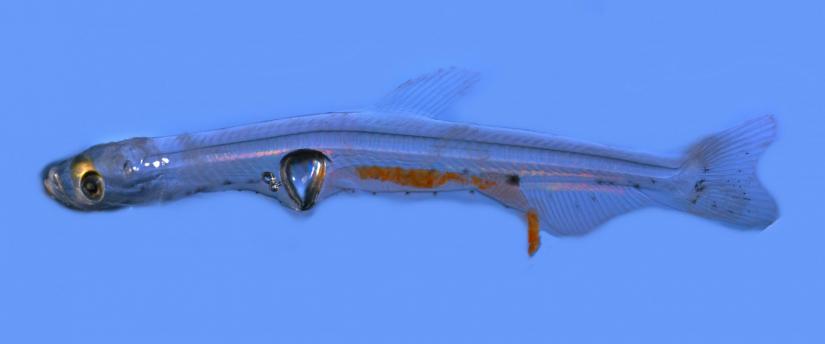
Delta Science Fellowship 2020
Fellow: Levi Lewis, Postdoctoral, UC Davis
Research mentor: James Hobbs, University of California, Davis
Community mentors: Randy Baxter, California Department of Fish and Wildlife
Why this research matters
Recent population declines in threatened longfin smelt have been tied to a variety of factors, including
reduced freshwater outflow and food availability. However, more information is needed on the early life
stages of these fish and how growth and survival are impacted by environmental conditions. New
methods that apply linked age and chemical analysis of otoliths allow for detailed reconstructions of the
environmental conditions experienced by even long-dead specimens. Using these new approaches,
researchers can now gain extensive information on an individual’s prior movements and life-history.
Project
Results
Lewis first used laboratory experiments to validate new otolith-based techniques to assess the age,
hatch date, growth rate, salinity, and movements of longfin smelt. These otoliths (ear bones) grow
continuously through a fish’s life, which creates a record of their growth rate as well as information
about their chemical environment, much like a tree ring.
Using these new tools, Lewis analyzed otoliths of fish collected throughout the San Francisco Estuary to assess variation in growth and habitat use. Results identified several life-history strategies used by longfin smelt in the San Francisco Estuary. While most of the smelt migrated from freshwater to higher salinity water at around 150 days after hatching, there was wide variation in the locations and salinity of waters where they hatched or reared. This variation is supported by other recent embryological studies and could be important for population resilience in a changing climate.
Management Applications
Results from this project will be integrated into the Longfin Smelt Management, Analysis, and Synthesis
Report, which will be used to determine federal listing status and inform adaptive management of freshwater flows for fishes in the upper San Francisco Estuary. Furthermore, results are being used to inform the new Longfin Smelt Science Program being developed by the California Department of Water Resources and California Department of Fish and Wildlife as a requirement of the Incidental Take Permit as a requirement for the operation of the California State Water Project export facility. Results of this work are contributing to on-going research examining the consequences of interannual variation in climate on the growth and movements of this imperiled fish.
Select Publications and Presentations
Attachments
 Levi Lewis
Levi Lewis
